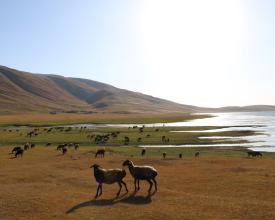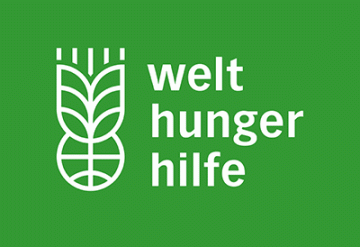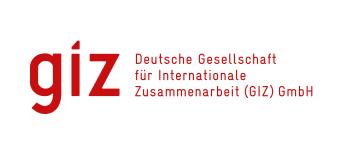
Sustainable pasture management for improving grassland ecosystems and livelihoods of pastoralists
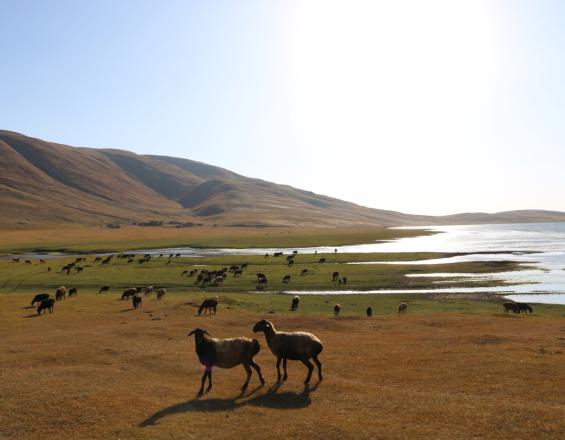
The Republic of Tajikistan is the smallest landlocked country in Central Asia. With a total area of pasture of 3.9 million hectares, alpine ecosystems constitute 80% of the country’s agricultural land, which is used heavily for livestock husbandry. Pastures play a major role in economic development and in reducing poverty in rural Tajikistan. However, the degradation of pastures is posing an increasing threat to rural livelihoods. Most of the livestock is privately owned, awhile approximately 96% of products, including dairy, are produced by private farmers. Only a few farms use modern technology.
Due to land degradation and overgrazing, the area for pasture has decreased since independence. Yet, the livestock numbers have increased by over 65 % and are consequently is the main driver of overgrazing. This trend is also threatening the important biodiversity of adjacent ecosystems, with restoration being nearly impossible and becoming more and more expensive.
Context
Challenges addressed
Tajikistan faces a major problem of unsustainable grazing pressure from high livestock numbers and insufficient pasture management. The country is in dire need of better pasture governance based on a solid legal basis.
Overgrazing, especially in the immediate vicinity of villages puts significant pressure on the communal pasture lands and leads to serious land degradation. This land degradation puts the livelihood and food
security of the rural Tajik population at risk. Despite the adoption of the pasture law in 2019, community-based controlled grazing mechanisms are not yet widespread. The main reasons are the absence of by-laws and weak law enforcement. Sustainable pasture management planning is consequently a crucial tool to be applied by pasture users.
Location
Process
Summary of the process
For sustainable pasture management to be successful, both pasture governance as well as pasture management techniques have to be addressed and improved. A sound legal framework and organizational development provide the necessary structure to keep livestock numbers at a sustainable level. Pasture management techniques, even basic ones such as introducing a pasture management plan and grazing calendars, can support the optimal though still sustainable use of pastures.
Building Blocks
Pasture Governance
Improvement of the legal framework
Tajikistan faces a major problem of unsustainable grazing pressure from high livestock numbers and insufficient pasture management. The country is in dire need of better pasture governance based on a solid legal basis. Therefore, GIZ Tajikistan has worked on the improvement of the legal framework and facilitated a dialogue between different stakeholders.
Additionally, and institutional analysis on pasture management in Tajikistan that outlines the institutional and legal set-up and distribution of roles and responsibilities in the pasture management sector of Tajikistan has been conducted together with other organisations to support the governance process in the future.
Further, a Pasture Management Networking Platform has been supported. The objective of the PMNP is to contribute to the sustainable management of pastures in Tajikistan. The objective is pursued through national dialogue and knowledge exchange based on practical and on-the-ground experiences of the pasture management network members.
Enabling factors
1. Conduct an institutional analysis on pasture management in Tajikistan
2. Support a strong law on Pasture and feasible by-laws
3. Support the establishment of Pasture User Unions (PUU)*
*Pasture User Unions (PUU) are comprised of pasture users and are established at the jamoat (rural municipality) level with members from several villages. It is a formal organisation, replete with a statute and legal registration, stamp and bank account.
Lesson learned
When improving the pasture governance the following should be considered:
- Inform all stakeholders on the pasture law and support the enforcement of the by-laws;
- Specify the roles and responsibilities in pasture management and ensure all stakeholders are aware of their roles and responsibilities;
- Identify entry-points for future improvement of the legal framework;
- Ensure good donor coordination;
- Support the creation of Pasture User Unions (PUU) and Commission on Pastures (CoP);
- Encourage knowledge transfer of good practices.
Resources
Pasture Management Techniques
Pasture management Planning in Tajikistan
Overgrazing, especially in the immediate vicinity of villages puts significant pressure on the communal pasture lands and leads to serious land degradation. This land degradation puts the livelihood and food security of the rural Tajik population at risk. Despite the adoption of the pasture law in 2013 (which sets the framework), community-based controlled grazing mechanisms are not yet widespread. Main reasons are the absence of by-laws and weak law enforcement. Sustainable pasture management planning is consequently a crucial tool to be applied by pasture users.
Enabling factors
1. Study of the current pasture management plans to identify needs for improvement
2. Pasture plant species catalog
3. Tool for calculating the pasture carrying capacity
4. Grazing calendars
5. Techniques for sustainable fodder production for the winter season
Lesson learned
For a successful implementation of sustainable pasture management techniques, the following should be considered:
- Assess the current conditions of the pasture and look at the current way the community is managing its pasture;
- Improve livestock management overall and do not only look at pasture management;
- Apply a simple tool to calculate the pasture carrying capacity;
- Provide practical exercises in the field for farmers, e.g. through farmer field schools;
- Ensure the pastures can regenerate after a grazing period and pastures are not grazed too early in spring;
- Provide low-cost fencing techniques;
-
Use traditional, local varieties of fodder seeds;
-
Increase plant diversity that provides nectar for pollinators and beneficial insects;
-
Control and prevent erosion;
-
Ensures economic benefits to farmers
-
Ensure optimal use of fodder production areas;
-
Ensure access to technologies through documentation of techniques on platforms like Wocat and PANORAMA.
Impacts
For pasture management to become sustainable in Central Asia the following dimensions have to be addressed equally:
- Institutions: Based on a multi-stakeholder dialogue the legal framework on pasture management was improved and by-laws developed to ensure its implementation.
- Organisational Development: Pasture User Unions (PUU) were established in all regions and a national Pasture Management Networking Platform founded that ensures the exchange between all pastoralists and facilitates a dialogue with policymakers.
- Competence Development: Training events on pasture management planning for pastoralists enable pasture users to plan and manage their land sustainably.
- Knowledge Management: An online document management system was established that enables instant access to a variety of pasture management techniques and planning documents.
- Socio-cultural relations: Local traditions and cultures are reflected in pasture management plans.
- Planning & Monitoring: Simple pasture management plans and grazing calendars enable pastoralists to plan the sustainable management of their ecosystem jointly with other pasture users.
- Environment: It is recommended to plant local pasture seeds and diversify the pasture species as much as possible. This will ensure optimal regrowth and nectar for beneficial insects and allows for honey production as a side business.
Beneficiaries
Beneficiaries are pastoralists in all regions of Tajikistan. Further, the approach supports the pasture governance and hence, supports the Pasture Trust under the Ministry of Agriculture of the Republic of Tajikistan.
Sustainable Development Goals
Story
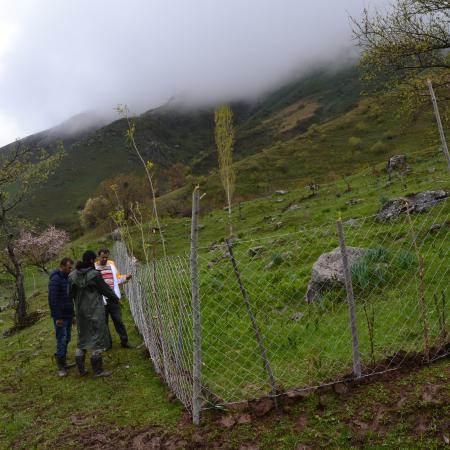
Mr Saidashraf Iskandarov cultivates a plot of about 1 ha in the hills of the watershed Jafr in Tajikistan’s green Rasht valley. Through the project, he has started to cultivate fodder on his plot that he prior used for a few fruit tree species and for grazing his flock of sheep and goats. The project has supported him to fence the area partially as well as to install contour lines across his plot to improve water retention.
The fodder he harvests from the plot provides sufficient food for his livestock during the long and cold winter months. Surpluses he is able to sell on the market at relatively high prices, as fodder is scarce, and prices increase exponentially in the winter season.
During the 1,5 years since he fenced the area and stopped grazing in immediate proximity to the trees, he has also been able to harvest more fruits and trees have grown faster without the disturbance of the animals.
Mr Iskandarov has further installed four beehives on his plot from which he is producing honey for his and his families own consumption.

